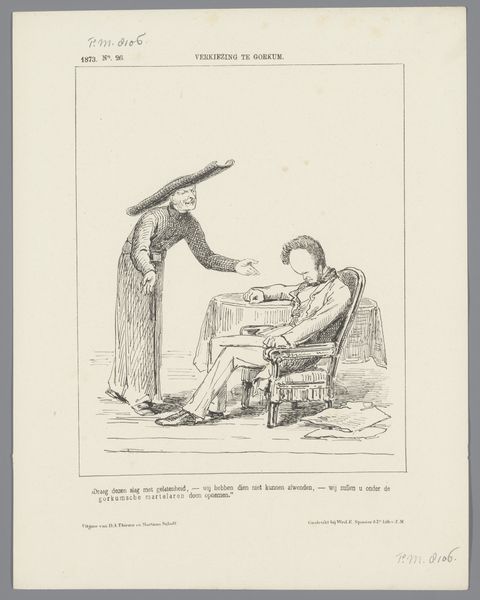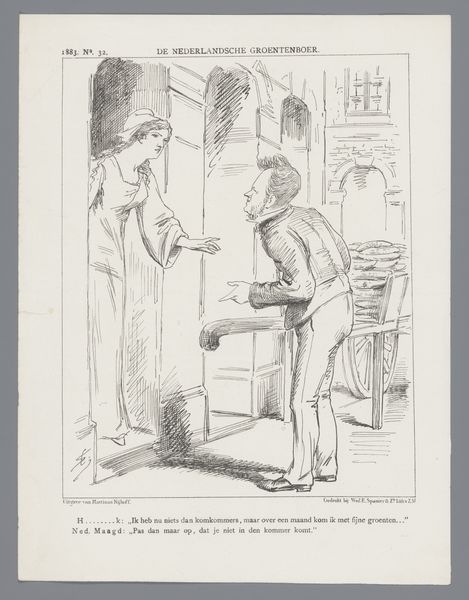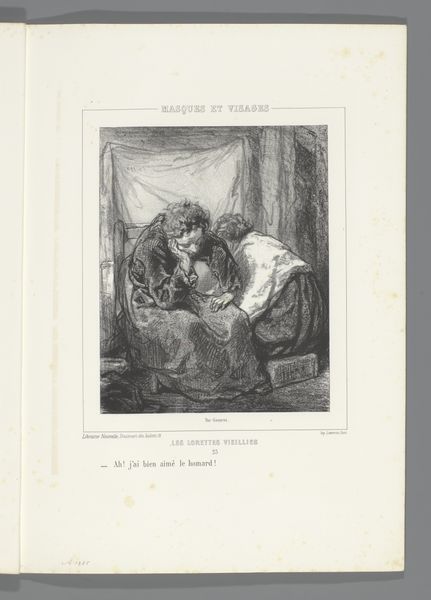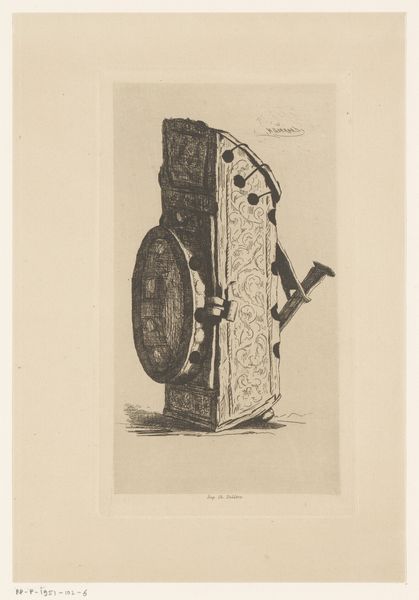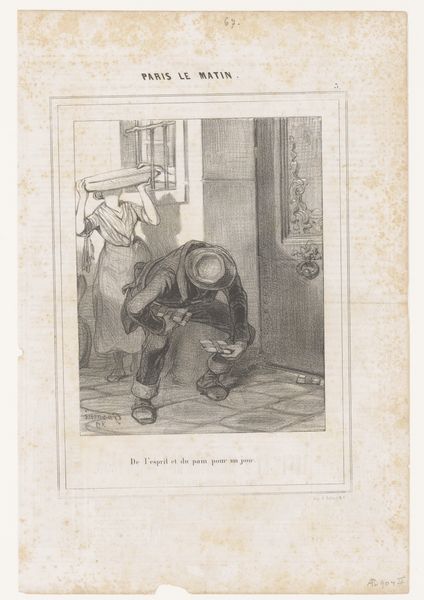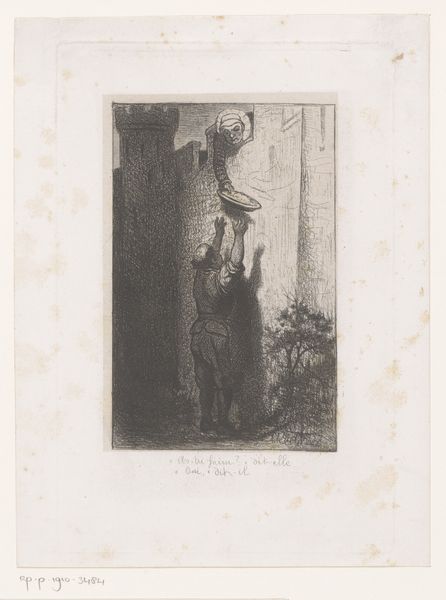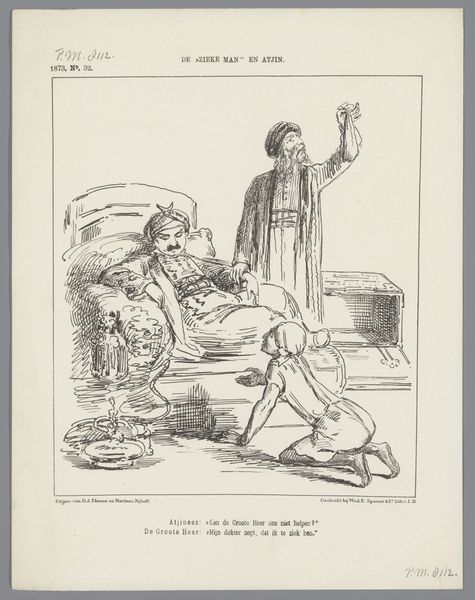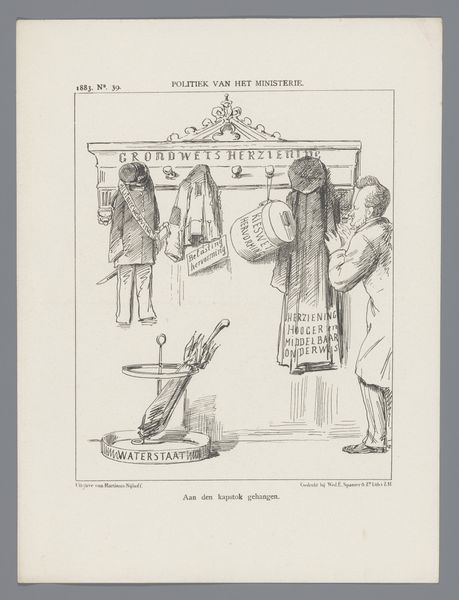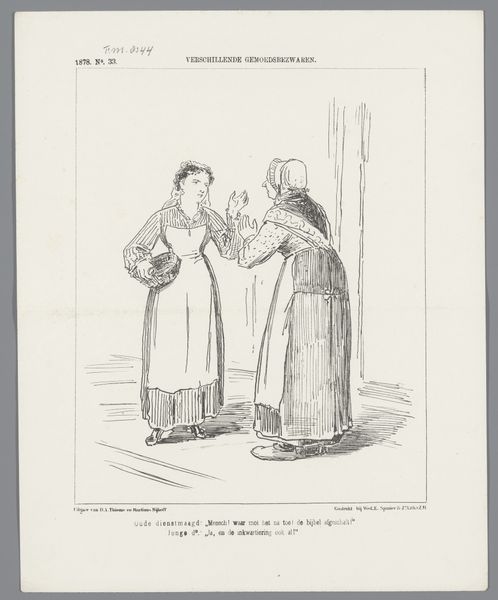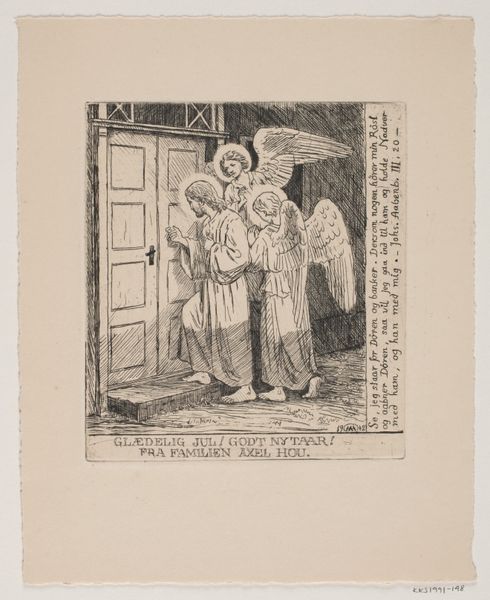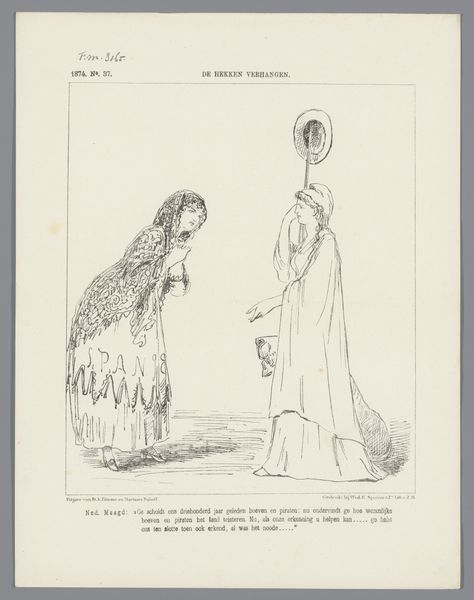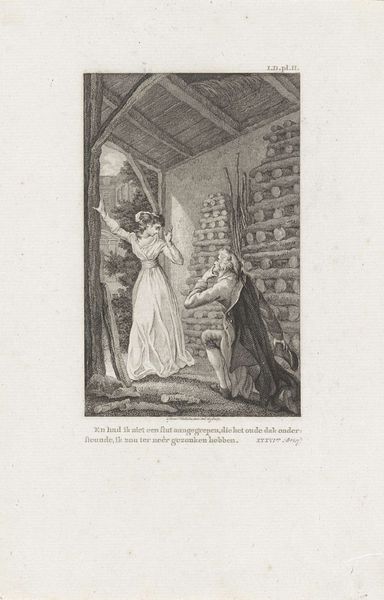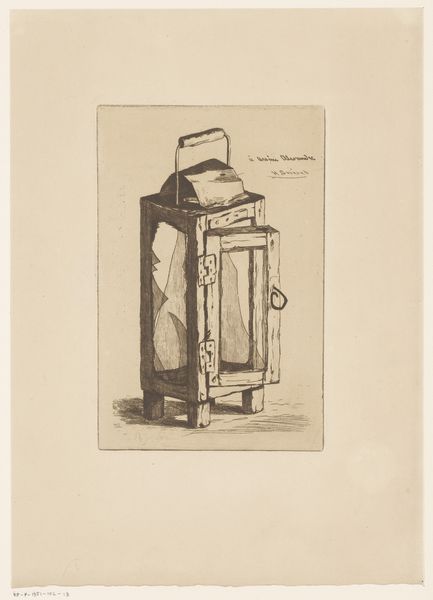
Dimensions: height 275 mm, width 215 mm
Copyright: Rijks Museum: Open Domain
Curator: This ink drawing on paper by Johan Michaël Schmidt Crans is titled “3-20 Juni 1877” dating back to, of course, 1877. I see an allegorical scene unfold. Editor: There’s an overwhelming sense of mourning; the figure shrouded in drapery looks like a classic depiction of grief. Curator: Absolutely. Observe how the veiled figure, likely a representation of sorrow, stands beside a tombstone. She holds a wreath, about to crown what appears to be a portrait on the tombstone. Note how the other discarded wreath at the tombstone’s foot mirrors the transient nature of grief. It’s as if sorrow is something you carry and lay down again. Editor: And how it's rendered so delicately, with such fine lines! The overall composition places this intense moment within what could be read as either a cultivated or a natural setting, so that hints at a cultural message in and of itself. It feels like it attempts to domesticate grief somehow. Who would be given this public mode of remembrance? What do we know about its original location? Curator: Well, while we lack precise location details, knowing that Crans situated his work within the Romantic movement allows us to understand the symbolic emphasis on emotion and subjectivity, as we can see here. Consider too how the surrounding landscape has a stylized character typical of romantic sensibilities in rendering nature—a space for inward reflection and contemplation. The figure’s gesture invites reflection not only on personal loss, but also collective cultural memories and ideals concerning bereavement. Editor: Yet, despite its beauty and artful execution, the drawing feels undeniably steeped in the power dynamics of its time. The deliberate placement of the wreath, the mourning attire - these seem less like organic expressions of grief and more like carefully curated performances, gesturing at specific roles assigned to the bereaved. Is it just me, or are there strong elements of class and possibly gender at play here? Curator: It's fascinating how you perceive those social scripts playing out! Indeed, this drawing offers many avenues to approach our understanding of art, grief, memory, and identity within cultural history. Editor: I'm taking with me a renewed look at those silent social structures shaping what we see even now when confronting what's considered personal grief. Curator: I am struck again by the timeless power of symbols, each carefully placed to resonate with shared human experiences across different contexts.
Comments
No comments
Be the first to comment and join the conversation on the ultimate creative platform.
